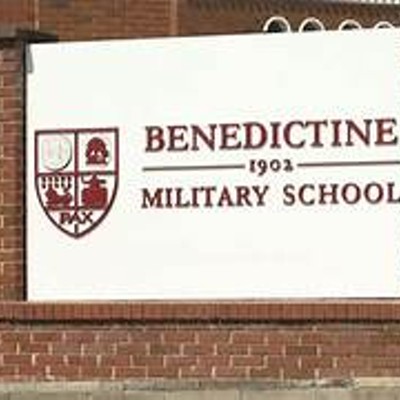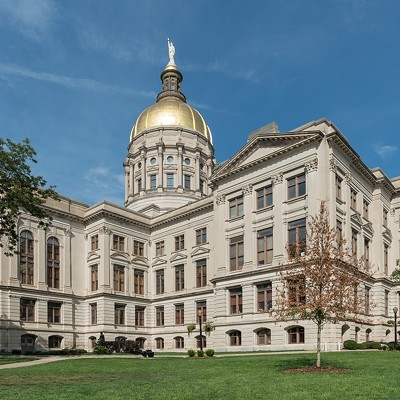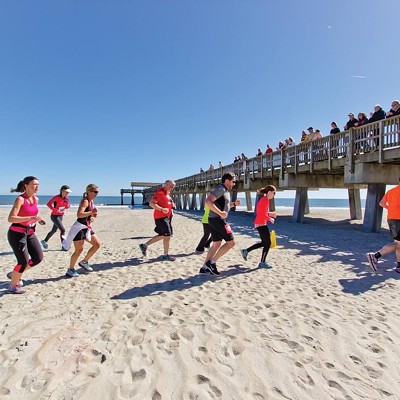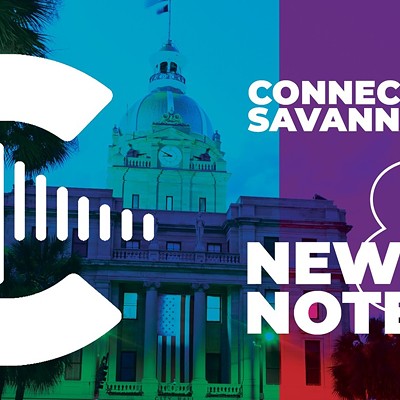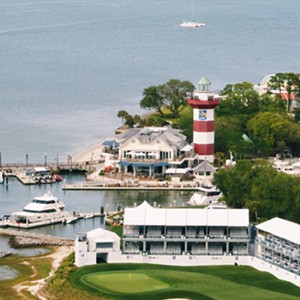SAVANNAH'S WESTSIDE covers a lot of ground. It’s bordered on the east by Lathrop Avenue, on the north by McKenna and West Bay streets, on the west by U.S. 80 and Market Street, and the Louisville Road on the south.
It’s also an area of change, as the City of Savannah works to revitalize the previously neglected communities there. The process of clearing, cleaning, restoring and building has given residents a sense of hope and pride.
It is those residents who are at the heart of Low Land and the High Road, a book about life and community in the Hudson Hill, West Savannah and Woodville neighborhoods. “There is life in all three communities,” says Alderman Van Johnson. “We’re celebrating our rich future and commemorating our rich past. We can see we came from a great and powerful people.”
The book is a companion to a Web site, www.savannahneighborhoods.org. Both were prepared by the City of Savannah’s Department of Cultural Affairs and are being offered to residents at no cost.
The Georgia Historical Society and several other agencies helped provide images and information for the book, which was released at a public book signing on May 28. Residents provided treasured photos and memories.
“A number of people are featured,” says Michelle Hunter, cultural affairs coordinator for the city and manager of the project. “They were so involved in the process. They opened their hearts and memories.”
Many residents were interviewed by Charles J. Elmore, who transcribed remarks and created an invaluable oral history. The book was written by Martha L. Keber, a retired Georgia College & State University professor.
“It’s been one of the most fulfilling projects I’ve ever been associated with,” Keber says. “They say it takes a village to raise a child. For this project, it took the support of three neighborhoods.”
Twenty-four people are profiled in the book. “They gave us recollections of good times and bad times,” Keber says. “One of the bonuses has been the opportunity to see people coming together and remembering. I could see the past through their eyes.”
The book focuses on day-to-day life, and covers a block of time from the late 19th century to the present. The project was completed after years of extensive research, which included digging in archives, studying newspapers and finding old photographs.
The topics include the west side’s schools, employment, housing, civil rights, churches, and leisure activities. It was industry that drew families to the area, whether at the Port of Savannah, sugar refineries or the railroad.
Leisure activities also are covered, and some of the best memories are recounted there. “The West Savannah Whipperettes were the best women’s soft ball team anywhere,” Keber says. “Three times, they were city champions. They were Georgia state champions. They had a winning streak anyone would envy -- 55 straight wins. There have been great things in West Savannah, Woodville and Hudson Hill. There are great things happening now, and there will be more to come.”
At one time, Hudson Hill, West Savannah, and Woodville were separate communities about 2-3 miles outside of Savannah. Many small businesses were opened to meet residents’ needs, and churches and schools were built.
Although they eventually were annexed into the city, all three neighborhoods retain individual identities even today.
At one time, whites and blacks lived side-by-side, but after integration of the public schools in the 1960s and the resultant bussing of children across town, white families moved away, leaving the neighborhoods predominantly African-American.
Economic downturns have plagued the neighborhoods, and unemployment, urban blight and crime left residents at risk. Projects such as Sustainable Fellwood offer hope for the future.
“It’s so true that where there is no vision, people perish,” Mayor Otis Johnson says. “We have a vision of a neighborhood where working people have a decent, affordable place to stay. But over the years, the city allowed West Savannah to deteriorate. In 2003, when I was campaigning, I walked through West Savannah, and it pained me significantly.”
Johnson has fond memories of visiting his grandmother in West Savannah. “Also, in Fellwood Homes, I had an aunt and uncle,” he says. “On Christmas Day, Farrell Street would be blocked off and we spent the whole day skating. I’ve been in and out since then, but in 2003, it hit me. I took it on as a personal commitment to accelerate those redevelopment plans.”
Now those plans are taking shape. “I’m very proud that Sustainable Fellwood is going to be one of the first in the nation to move toward LEED certification,” Johnson says. “It means a lot.”
Denis Blackburne, the chief financial officer for Melaver, Inc., said the project will encompass West Savannah’s past, present and future. “Melaver, Inc. has given priority to redevelop the Sustainable Fellwood site,” he says.
Once the site of a public housing project, Fellwood Homes, the land will be transformed into living and commercial space with an emphasis on sustainable, green construction. “The infrastructure will be started in a couple of weeks and we’ll be vertical no later than September,” Blackburne says.
Construction on the second phase could begin as early as next year, Blackburne says. “I’ve lived on three continents and worked in 50 cities,” he says. “Never have I seen anywhere where private and public entities work together except Savannah. This is a model project.”
The project also is a model because of its emphasis on sustainability. “Sustainable green means it’s going to have healthier buildings to live in,” Blackburne says. “They will be energy efficient. We’re committed to saving as many trees as possible.”
Blackburne hopes residents read the book and share it with others. “You can read about Fellwood in the book and then watch us develop Sustainable Fellwood,” he says. “I think you’re going to like it.”
Free copies of Low Land and the High Road are available at the Department of Cultural Affairs, 9 W. Henry St.; Diaspora Marketplace, 510 MLK Jr. Blvd.; and Live Oak Public Library branches. One per household please.


